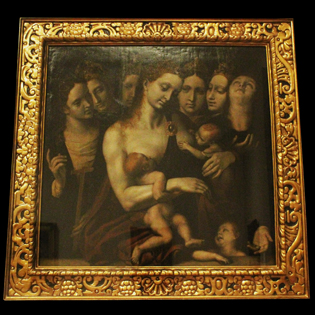
Fernando Gómez Herrero, a Teaching Associate in the Department of Modern Languages at Birmingham, attended the The Art of Ornament International Conference in Lisbon. He gave a paper entitled “About the Mannerist Ornament: The Seven Virtues (1550) of Pedro de Campaña.” and here writes about his paper and the conference.
In relation to “the most willful and perverse of stylistic periods, I brought critical attention to this beautiful, if little known painting called “the Seven Virtues” by Peter de Kempeneer (1530-1580), hispanicized as Pedro de Campaña. The painting is currently part of the rich holdings of the Museo de San Carlos in Mexico City. Born in Brussels, trained in Italy, Campaña’s artistic activity mainly takes place in the city of Seville, arguably the main interconnecting city between Europe and the Americas in Early Modernity/ coloniality (16th-17th centuries).
Yet, there is the historiography thereafter. Mannerism delivers an interconnected internationalism, the presumption of equal worth surrounding transplanted models between old and new worlds, and also a perceived “crisis” of models. "7 Virtues" is grand pictorial intellectual exercise, a feast for the eye and the mind of the observer. It constitutes a virtuosity of pronounced foreshortening, and an intellectual predilection for an erudite and allegorical signification that straddles literature and the arts, the seduction of disproportionality and the deliberate “lack” of perspective and "contrived" or "surreal" space, and consequently a feeling of claustrophobia, anxiety, restlessness, even “foreignness,” within if not against dominant matrices of intelligibility (“nativism,” classicism, antiquity, Christianity), etc.
This presentation read the painting taking into account my dialogue with Museo de San Carlos curators. Areas of obscurity remain. Contacts have been made to expand the bibliography to include a Portuguese dimension (the Portuguese Manueline style and the Plateresque style in the city of Salamanca in Spain for example). The fundamental idea is to think expansively of the Euro-Americas or the "Greater Renaissance," by adding the Iberian and Latin American dimension to enduring themes of aesthetics and politics.
I am happy to report that the Gulbenkian Foundation is an important point of reference, that Portugal exists and that Lisbon is a great European capital that will deliver warm companionship and good knowledge, top cultural sites, excellent food, Pessoa evocations and challenges to the typical perceptions of aesthetics in the Anglophone world. It is imperative to link up with these international gatherings in which discussions of vast vistas of aesthetics and politics are taking place.
The University of Birmingham must make sure to be present and fund this type of collaborations. The information will find a way into the classrooms. The second day took place in the UNESCO Heritage site of SINTRA with evidence of Moorish-inspired Victorian-period ornamentation. The visit to the Monastery of St. Jerome, a second UNESCO site, made the historical riches of Mannerism undeniably real. Such exposure brings into question typical Anglophone reactions of apprehension towards notions such as Mannerism and Baroque within vast historical dynamics.